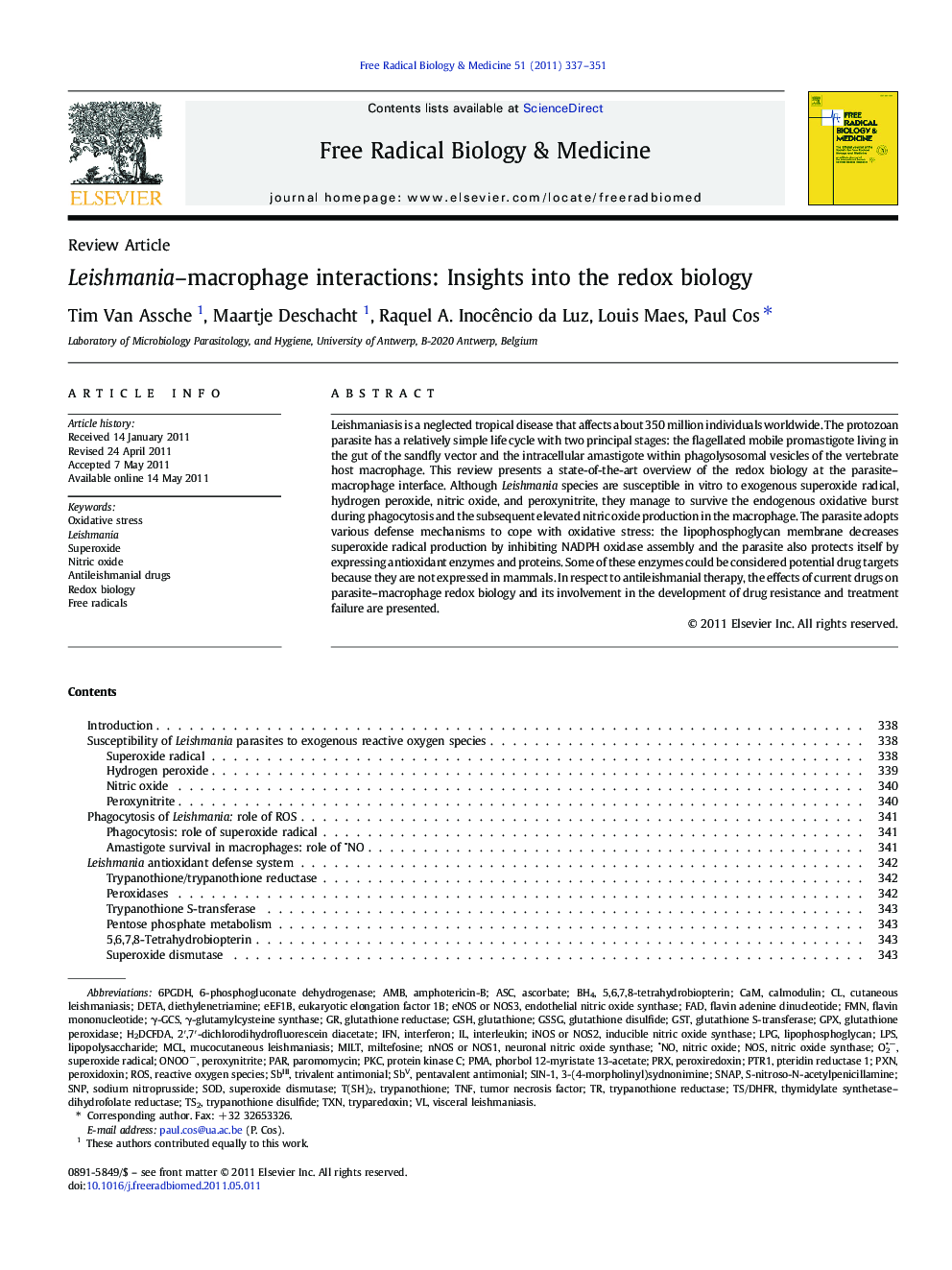| Article ID | Journal | Published Year | Pages | File Type |
|---|---|---|---|---|
| 10738067 | Free Radical Biology and Medicine | 2011 | 15 Pages |
Abstract
Leishmaniasis is a neglected tropical disease that affects about 350 million individuals worldwide. The protozoan parasite has a relatively simple life cycle with two principal stages: the flagellated mobile promastigote living in the gut of the sandfly vector and the intracellular amastigote within phagolysosomal vesicles of the vertebrate host macrophage. This review presents a state-of-the-art overview of the redox biology at the parasite-macrophage interface. Although Leishmania species are susceptible in vitro to exogenous superoxide radical, hydrogen peroxide, nitric oxide, and peroxynitrite, they manage to survive the endogenous oxidative burst during phagocytosis and the subsequent elevated nitric oxide production in the macrophage. The parasite adopts various defense mechanisms to cope with oxidative stress: the lipophosphoglycan membrane decreases superoxide radical production by inhibiting NADPH oxidase assembly and the parasite also protects itself by expressing antioxidant enzymes and proteins. Some of these enzymes could be considered potential drug targets because they are not expressed in mammals. In respect to antileishmanial therapy, the effects of current drugs on parasite-macrophage redox biology and its involvement in the development of drug resistance and treatment failure are presented.
Keywords
DETAS-nitroso-N-acetylpenicillamineGSHGSTAmphotericin-BGPXPTR1BH4AMBMCLSIN-1GSSGNOSTs2TXNγ-GCSTrypanothioneSbVPKCASCLPGγ-glutamylcysteine synthaseTNF•NOphorbol 12-myristate 13-acetateLPSflavin adenine dinucleotideFMN6PGDHPRX2′,7′-dichlorodihydrofluorescein diacetate5,6,7,8-tetrahydrobiopterin6-phosphogluconate dehydrogenaseH2DCFDAPMAO2•−ONOO−ROST(SH)2PXNAscorbateinterferonIFNinterleukinFADTryparedoxintrypanothione reductaseOxidative stressParAntileishmanial drugsDiethylenetriaminetrypanothione disulfideFree radicalssuperoxide radicalredox biologyCAMCutaneous leishmaniasisSODinducible nitric oxide synthaseendothelial nitric oxide synthaseneuronal nitric oxide synthaseSuperoxideSuperoxide dismutaseSNAPtumor necrosis factorflavin mononucleotideLeishmaniaVisceral leishmaniasismucocutaneous leishmaniasisLipophosphoglycanlipopolysaccharideMiltMiltefosinesodium nitroprussideNitric oxidenitric oxide synthaseParomomycinPeroxidoxinProtein kinase CPeroxiredoxinPeroxynitriteSNPCalmodulinGlutathioneglutathione S-transferaseglutathione disulfideglutathione reductaseglutathione peroxidaseReactive oxygen species
Related Topics
Life Sciences
Biochemistry, Genetics and Molecular Biology
Ageing
Authors
Tim Van Assche, Maartje Deschacht, Raquel A. Inocêncio da Luz, Louis Maes, Paul Cos,
